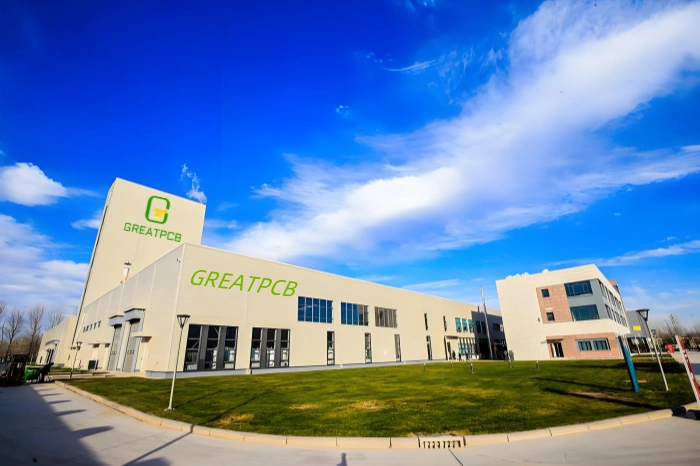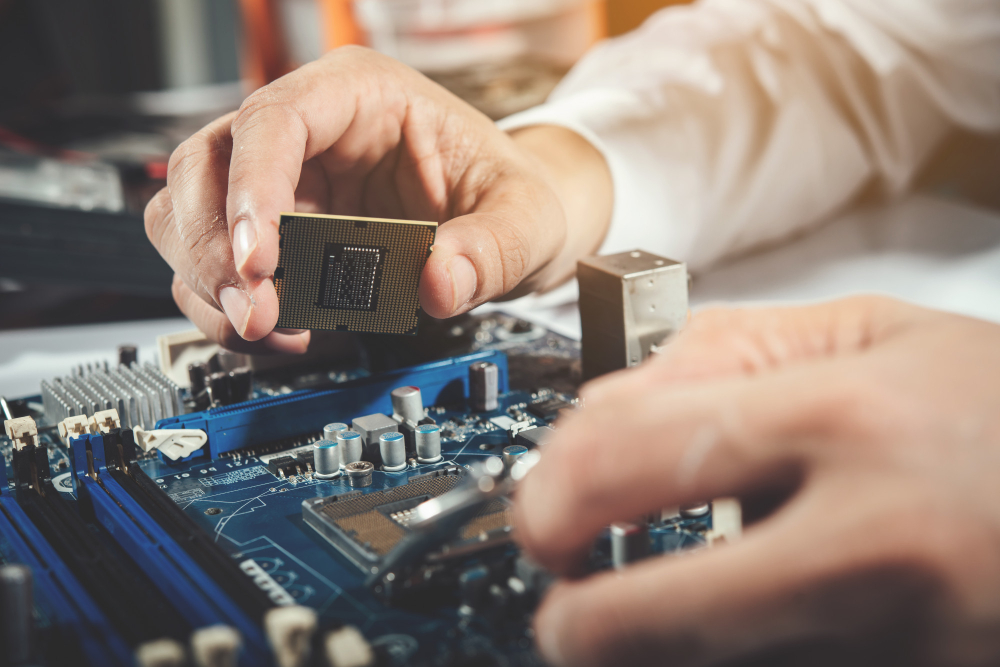FR4 PCB
FR4 standard
Assembly
What is fr4?
fr4 is typically a glass fiber reinforced epoxy resin laminate, using glass fiber cloth as the reinforcing material and an epoxy resin system as the laminate. fr4 is a flame-retardant material grade designation, indicating that the material fr4 must be able to self-extinguish when in a burning state. “FR” signifies flame retardancy, and the number “4” distinguishes it from other materials of the same grade, indicating the resin is epoxy, reinforced with glass fiber cloth, and meets UL94 V-0 flame retardant standards. fr4 merely categorizes the material type rather than specifying a particular material fr4.
fr4 specifications are set by NEMA (National Electrical Manufacturers Association). Common fr4 PCB NEMA substrate grades are shown in the table below.
| Substrate Type | Grade | Material | Flame Retardant |
|---|---|---|---|
| Paper Substrate | XPC | Phenolic Resin Paper | No, UL94 HB |
| XXPC | Modified Phenolic Resin Paper | No, UL94 HB | |
| FR-1 | Flame Retardant Phenolic Resin Paper | Yes, UL94 V-1 | |
| FR-2 | Flame Retardant Phenolic Resin Paper | Yes, UL94 V-1 | |
| Glass Fabric Substrate | FR-4 | Epoxy Resin Glass Fabric | Yes, UL94 V-0 |
| FR-5 | Epoxy Resin Glass Fabric | Yes, UL94 V-0 | |
| Composite Substrate | CEM-1 | Epoxy Resin Paper and Glass Fabric | Yes, UL94 V-0 |
| CEM-3 | Epoxy Resin Glass Fabric and Glass Felt | Yes, UL94 V-0 |
Key Benefits and Limitations of FR-4 in PCB Manufacturing
Flame-Retardant Properties
The “FR” in FR-4 stands for “Flame-Retardant.” In electronic devices, safety is paramount. FR-4 contains special chemical substances that slow the spread of fire during an incident, protecting electronic devices from damage. This flame-retardant characteristic makes FR-4 the preferred material in electronic applications.
Excellent Electrical Performance
fr4 PCB exhibits outstanding electrical properties, with low dielectric constant and dielectric loss, ensuring efficient and stable transmission of high-speed signals. Additionally, fr4’s insulation performance effectively isolates interference between different circuits, enhancing the reliability of fr4 circuit boards.
Mechanical Performance
fr4 board also demonstrates excellent mechanical properties, including flexural strength, impact resistance, and heat resistance, ensuring stability and durability of PCBs in complex environments. Its tensile strength reaches up to 65,000 psi, and its compressive strength is around 38,000 psi, allowing fr4 to perform well under mechanical stress. Additionally, its electrical properties remain stable, maintaining good insulation in both dry and humid environments.
Excellent Processability
FR-4 has excellent processability, suitable for various PCB production processes such as drilling, cutting, and soldering, meeting diverse design requirements. Moreover, FR-4 is cost-effective, suitable for large-scale production and cost control.
Stability and Durability
The stability and durability of FR-4 are also key reasons for its popularity. It has excellent dimensional stability, meaning it will not deform due to changes in temperature or humidity. Moreover, FR-4 possesses resistance to radiation, chemical corrosion, and thermal shock, enabling it to perform well in various harsh environments.
Environmental Friendliness
In today’s world, where environmental awareness is increasing, the eco-friendliness of FR-4 is significant. Its flame retardant rating reaches 94V-0, indicating that it produces minimal harmful gases when burned, making it more friendly to the environment and human health.
Disadvantages of FR-4
Low Heat Resistance
In high-temperature environments, Fr4 has poor thermal conductivity. High-energy components under high load conditions can lead to damage, affecting its electrical performance and reducing transmission efficiency.
Classification of FR-4 Based on Different Criteria
Using glass fiber cloth as the reinforcement material, epoxy resin as the resin system, and meeting UL 94V-0 flame retardant rating, these substrates are categorized as fr4, a comprehensive material classification in PCB terminology.
Based on Tg Value: The glass transition temperature (Tg) of the resin system determines its transition from a rigid or “glassy” state to a flexible or softened state. FR-4 is categorized into low Tg (around 135°C), mid Tg (around 150°C), and high Tg (around 170°C), depending on its Tg value.
Based on Dielectric Loss (DF): DF stands for Dielectric Loss Factor in fr4. The magnitude of DF directly impacts the material fr4’s high-frequency performance. Lower DF results in reduced signal loss during high-frequency transmission, indicating better performance.

- Standard loss material (Df ≥ 0.02)
- Medium loss material (0.01 < Df < 0.02)
- Low loss material (0.005 < Df < 0.01)
- Ultra-low loss material (Df < 0.005)
Based on Supplier: Different suppliers of fr4 materials may exhibit varying performance characteristics. Greatpcb offers a variety of PCB materials including fr4, aluminum-based boards, and thermoelectric separation copper-based boards, all customizable to meet your specific needs.
Why FR4 is a Commonly Used Material for PCB Manufacturers
Early PCB Materials
The PCB material that was widely used at the beginning was paper phenolic copper-clad boards, such as XPC and XXXPC, due to their relatively low cost. However, these materials are not flame-retardant. After fire incidents caused by circuit failures in the 1970s, major electrical equipment began to shift towards using flame-retardant substrates. Consequently, the use of paper phenolic copper-clad boards with flame-retardant properties, such as FR-1 and FR-2, gradually surpassed that of non-flame-retardant XPC and XXXPC boards.
Evolution in PCB Technology
In the 1980s, multimedia portable devices, such as cassette players and pagers, became popular, leading to the development of smaller and higher-density PCBs. The application of multilayer PCBs also became more common, driving the advancement of PCB substrates.
Advantages of FR-4 Over Paper Substrates
Although paper substrates like XPC and FR-1 are cheaper than epoxy glass fabric substrates like fr4, they are inferior in terms of moisture absorption, heat resistance, and mechanical strength. Early on, paper substrates were typically used in price-sensitive consumer products, while fr4 was more common in industrial products. However, as consumer devices evolved to become smaller, lighter, and thinner, the use of fr4 plates also increased. With the widespread adoption of PCBs with standard thicknesses ranging from 1.6 mm to 0.8 mm, the mechanical strength and moisture resistance of paper substrates became problematic.
Challenges with Paper Substrates
Paper substrates are unsuitable for multilayer board production. As devices became smaller and PCB routing density increased, the market share of multilayer boards also grew. Thus, despite the relatively higher cost of fr4 plates, consumer products gradually began to shift towards using fr4 materials.
Processing Advantages of FR-4
Another important reason that PCB prototype manufacturers widely choose fr4 over the cheaper paper substrates is that paper substrates are not suitable for drilling processes and are only suitable for punching processes, while fr4 is very easy to process. With the continuous expansion of production capacity for materials like epoxy resin and glass fiber cloth, standard fr4 plates have now become a low-cost material with excellent mechanical properties and outstanding processability, making them popular among global manufacturers of mid-to-low-cost electronic products.
Summary
In summary, FR-4 is a versatile material known for its flame-retardant properties, excellent electrical and mechanical performance, and suitability for various PCB manufacturing processes. Whether you are using FR-4 plates for FR-4 circuit boards or other FR-4 properties, this material remains a top choice for many electronic applications.







